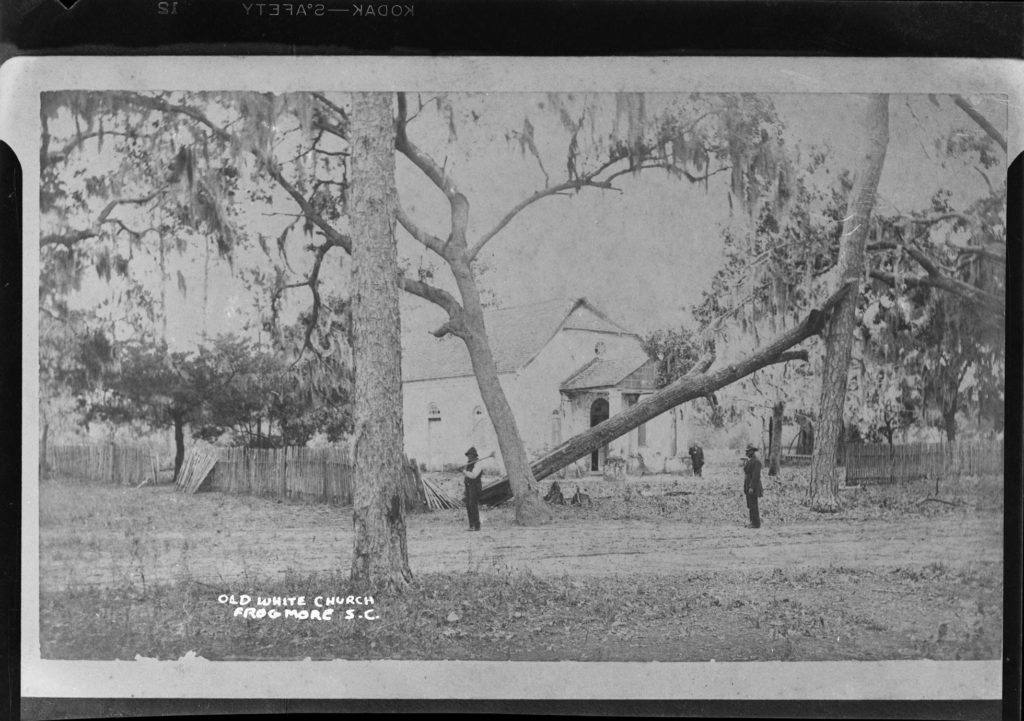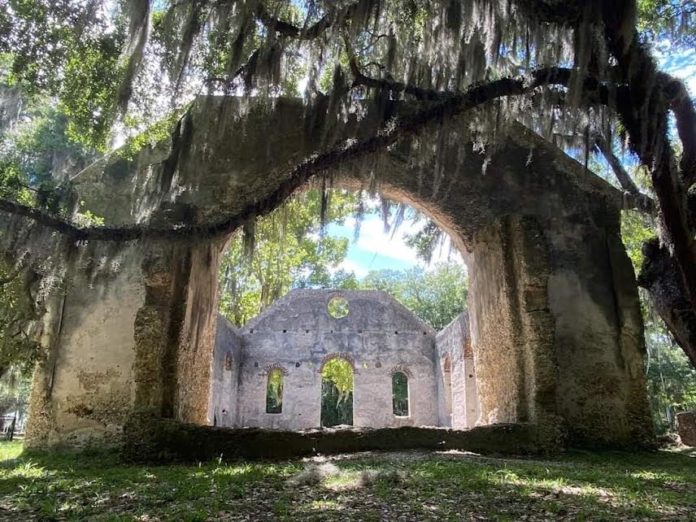A trip to St. Helena Island is not complete without a stop at the Chapel of Ease. There’s lots of history at this peaceful little roadside spot, and the story of St. Helena Island’s Chapel of Ease is an intriguing one, to say the least.
A short way off of the main road, down Martin Luther King, Jr. Blvd brings you to a seemingly hollowed out ancient church building on the left side of the road, after you’ve passed historic Penn Center.
During the Colonial period, chapels of ease were constructed by rice and cotton planters as houses of worship because their plantations were located so far from the churches. This one was built using tabby construction between 1742 and 1747 and served the island parishioners who were members of the Parish Church of St. Helena in downtown Beaufort.
Well attended in its formative years, it was once known as the White Church, as the combination of oyster shells and lime caused the structure to appear to glow white. Services ceased at the chapel after it was heavily damaged in a forest fire in 1886.

The Chapel and the Civil War
The church was virtually abandoned when the planters evacuated the island in the fall of 1861. During the Federal occupation of St. Helena, the church was used frequently by several of the Northerners who had come to the island to educate and train the freedmen. It was also used as a sanctuary by Methodist freedmen as early as 1868.
On November 4th, 1861, Sunday services were interrupted by a messenger who brought news of the impending invasion of nearby Beaufort by Union troops to a Captain William Oliver Perry Fripp. Fripp’s ancestors had been instrumental in the building and upkeep of the chapel, and Edgar Fripp and his wife Eliza were interred in a mausoleum built for them in the site’s graveyard.
Fripp mausoleum
The mausoleum was built by Charleston stone-cutter W.T. White, and remains on the property today still seeming to be in quite good condition. According to a diary written by Thomas B. Chaplin on April 13, 1852, “Said vault was a fine affair and did not have to wait very long for it’s occupants, Edgar & wife. The Yankees broke it open during the war hoping for treasure. It is now somewhat out of order.”
To this day, the vault remains out of order. The door of Fripp’s vault was ruined by the soldiers, and it was decided to brick up the entrance.
According to legend, workmen sealed the vault only to return the following day to find the bricks removed and neatly stacked beside the mausoleum. Convinced that the supernatural was the cause, the workers left the job remained unfinished.
Today the vault is empty, the door is still half-sealed by bricks, left just as it was the day that the workers left the job undone.
The ruins were added to the National Register of Historic Places in 1988.










